
The Savannah Way is around 3700km of stunning, remote, isolated and historically injected areas all linked by bone-jarring corrugated roads. It’s an iconic drive covering two states and one territory in Australia (Queensland, the Northern Territory and Western Australia) passing by five World Heritage sites, 15 National Parks, endless free camping and station stays making it a journey waiting to be explored.
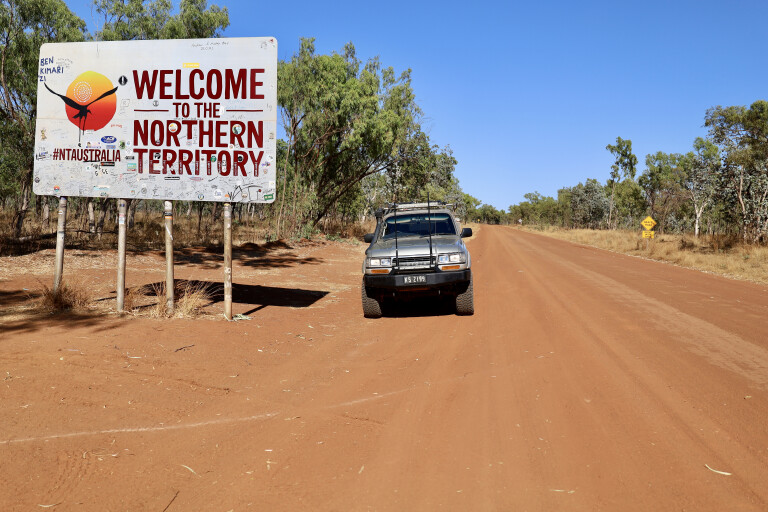
From the east, your Savannah travel route can start at Cairns in thick tropical rainforest, then through the deep outback gorges and end in the historic town of Broome or even in Kakadu National Park. Top Savannah Way highlights include the amazing rock formations of the Lost City, ancient Aboriginal rock art, impressive waterfalls, remote driving and much more.
Now while there’s so much to see and do over the 3700km, I found an array of history and stunning scenery in a short 700km section between Burketown in Qld and Borroloola in the south-western gulf region of the NT. That’s the great thing about the Savannah Way, you don’t have to do the whole journey at once, its easy to break away from it to explore different regions.
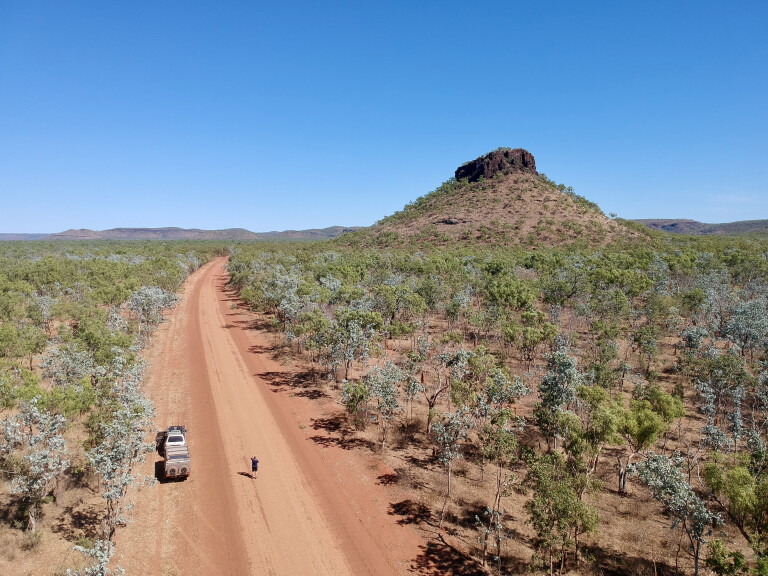
Burketown, right in the dip of the Gulf of Carpentaria seems so far away from life and anything else, but back in the day (1860-90) this area was alive with industry and fellow pastoralists looking for new land to settle on. Wind the clock back to 1841 when John Stokes explored the gulf’s coastline in HMS Beagle and liking what he saw, described the area as ‘the plains of promise’. Then, 20 years on in 1861, legendary explorers Burke and Wills travelled by land to finally reach the area, opening it up for settlement in 1864.
The town had a bumpy start over the next few years, William Landsborough arrived with a group of native police to bring order to the settlement, in 1866 gulf fever ravaged Burketown after a ship arrived with all the crew dead, the disease devastating the town’s population. To make matters worse, in 1887 a cyclone flattened the tiny settlement. Being so remote and isolated, the town’s population peaked in 1911 to 265 people, who mainly worked off the land and at the boiling works.
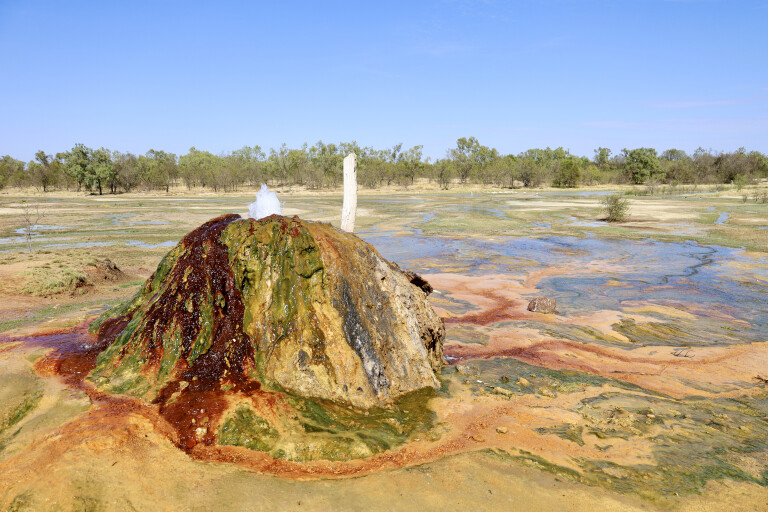
On the north-side of Burketown, a boiling works was set up in 1866 for cattle to be slaughtered producing meat, tallow and to process hides and skins. In 1870 this processing plant was the third largest in Qld processing 100 cattle a day, sending products as far away as London and importing stock from New South Wales and South Australia. Unfortunately a fire ripped through the plant in 1898 and burnt the place to the ground, but the townsfolk rallied together and raised funding to rebuild the plant. After several more years of operation, the boiling plant finally closed in 1914 due to the high cost of wages, transportation and now the lack of stock to cull.
Today the old boiling plant has a strange smell in the air, the huge boilers and wheels lie silent on the ground and nearly all of the timber foundations have been eaten away by termites, yet it’s a fascinating area to walk around and to think what used to be.
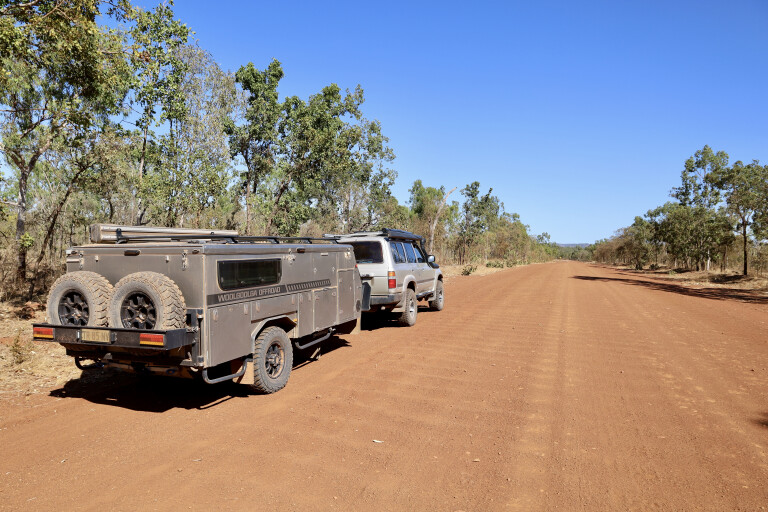
Modern Burketown proudly announces itself to the world as ‘The Barramundi Capital of Australia’. Situated on the flat plains of the gulf near the Albert River, it is really nothing more than an outback town these days where you can stock up on a few supplies and explore the local history. Another amazing piece of local history is the Artesian Bore on the southern side of town that was sunk back in 1897. Somehow they drilled down to 702m allowing the flow of mineral-rich water to gush out of the ground at a phenomenal rate where the minerals have built up leaving a 4-foot high statue before the water flows out on to the wetlands.
HELL’S GATE
Leaving Burketown and heading west on the Savannah Way, it’s dry and dusty and typical gulf landscape. But come the wet season and the whole region gets shut down due to the immense amount of water that this area receives. Both Tirranna Springs Roadhouse and Doomadgee are settlements where you can top up with food and fuel, and what surprised me was that it was a sealed road all the way to Hell’s Gate Roadhouse, nearly 200km away.
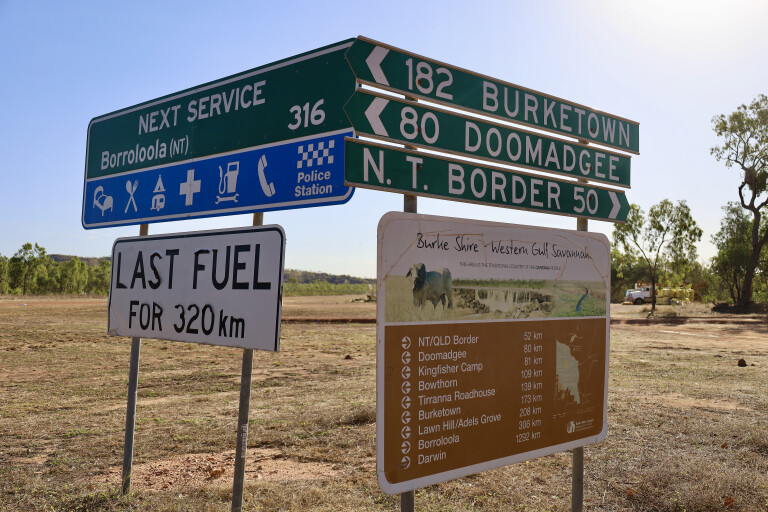
Hell’s Gate is like a retreat away from the harsh landscape of the surrounding country, where you can pull up and camp for a night or two with green grassy campsites shaded by outback gums. If you don’t want to cook, the roadhouse has a great menu inside, plus there’s an outdoor bar area to knock down a few cold ones. Part of Cliffdale Station, the roadhouse was built after six years of tough times and no income for Cliffdale, and today, it’s a must-do stop for any traveller. Not only does the roadhouse offer amazing food and accommodation, it also offers helicopter flights to remote water holes, functions and entertainment.
So, why the name Hell’s Gate? Well the name comes from the name of the small gap in the escarpment just one kilometre south of the roadhouse, originating in the early days of settlement of the gulf when the tough police force would escort settlers and travellers to the ‘portals of Hell’s Gate’. From that point onwards, they were ‘on their own’ until they reached the safety of police protection at Katherine in the NT nearly 1000km away.
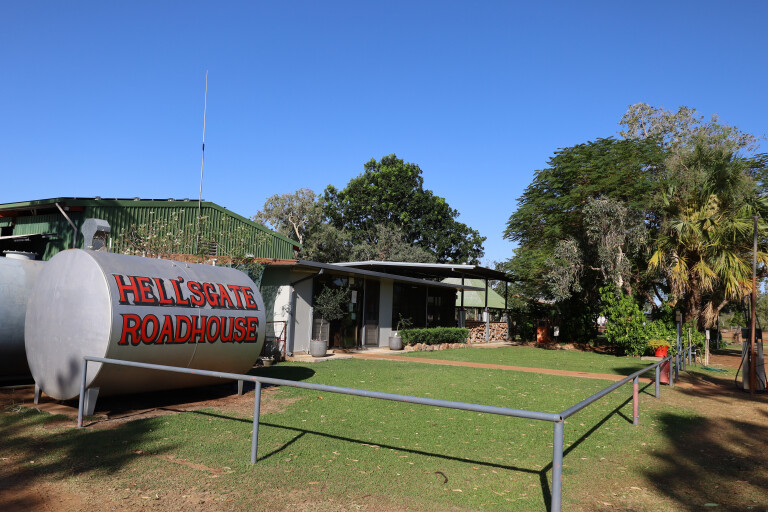
When you consider that back then travellers were on foot or horses, traversing lands that were largely unexplored and considered very dangerous, it would well have seemed like the gateway to hell. Where the road passes through Hell’s Gate, it’s the same track that explorer Nat Buchanan travelled as he guided the first settlers to ‘take up’ and settle the first two ‘cattle runs’ in the NT in 1881.
Leaving Hell’s Gate the dirt road is rough as nails, with extreme corrugations where your tyres need to be lowered and everything tied down. It’s only 55km to the NT border but it takes time and if later in the year, the bulldust holes are thick and deep. By the way, Hell’s Gate is the last stop for fuel heading west until Borroloola, 320km away.
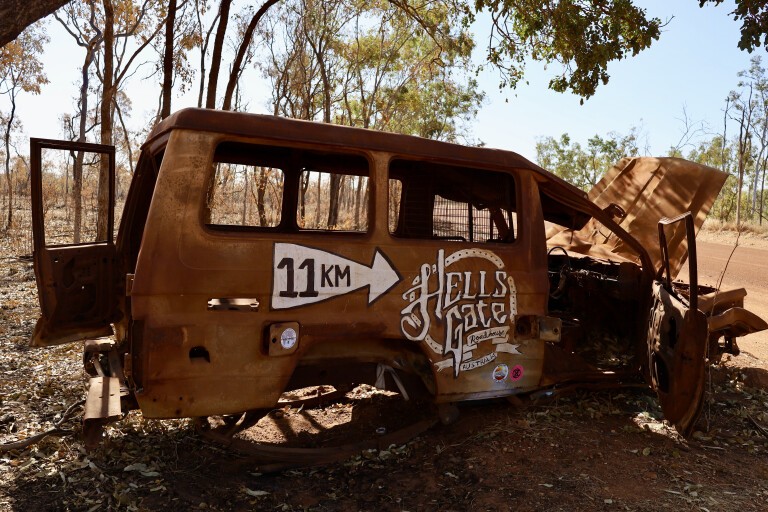
Wollogorang Road from the NT border is a spectacular drive, passing through Echo Gorge where the views from the top are endless in all directions, creek crossings (these turn to major rivers in the wet season) lined with age-old pandanus palms and huge gums constantly seeking water in the dry times. These creeks and pools are so very inviting but this is still croc country, and while you may not see them, they will see you.
BORROLOOLA
Another great feature of the Savannah Way is the amount of free camping available along the way. Some may be old gravel pits while other spots have views across the plains, but please remember to keep these areas clean. The 350km from Hell’s Gate to Borroloola is doable in one day but depending on conditions, your set up and time restrictions, stopping midway takes the pressure off those endless corrugations that seem to rattle everything loose.
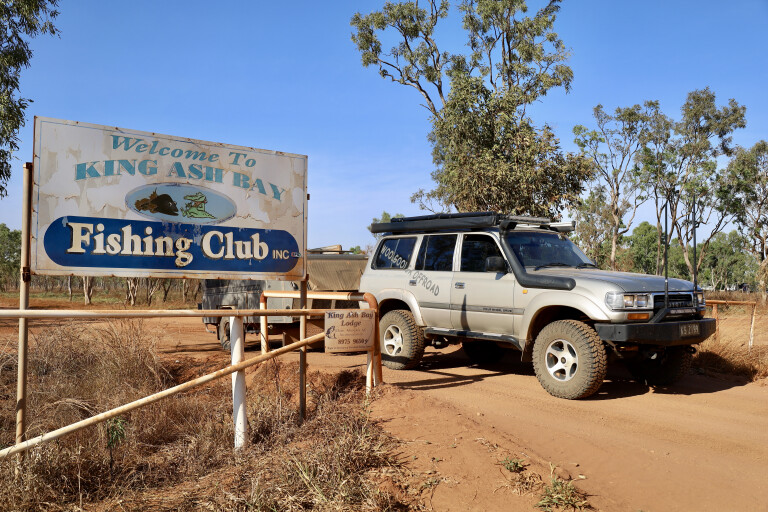
Arriving at the town of Borroloola is like entering a wild frontier town, where it’s been an isolated refuge for old bushmen and hermits since 1950. Borroloola has an Aboriginal population of around 800 and their culture is highlighted all around the town. The local museum was once the town’s police station and is now managed by the National Trust where it’s packed full of history items from the mid 1880s. The building, made from corrugated iron, has been partially restored but sits on the original foundations from when it was built in 1886.
The town has good facilities to restock before heading either farther along the Savannah Way to WA or north-west towards Darwin. Borroloola is known as a top barramundi fishing destination when the population doubles in the winter months and where anglers either stay in town or head out to King Ash Bay on the banks of the McArthur River. It gets busy out here, as mad-keen barra fishos base themselves here for months at a time with literally hundreds of kilometres of waterways to chase barra and access to the Sir Edward Pellew Group of Islands.

So if you’re doing the entire length of the Savannah Way or just parts of the iconic adventure across the top of Australia, there’s something up here for everyone. Just remember to create your own adventure.
Top 5 highlights
01: Burketown
Situated near the bottom of the Gulf of Carpentaria, Burketown is an isolated outback town where visitors can experience the natural wonders of the region. A great place to plan your visit is through the Burketown Visitor Centre website www.burketown.com.au
02: Hell's Gate
For the early European settlers, Hell’s Gate (named after a gap in the escarpment the road passes through) was the gateway to a fate unknown. Today, the eponymous Roadhouse on Cliffdale Station (located 50km east of the NT-Qld border) offers accommodation, meals, campsites, and more. Log on to www.hellsgateroadhouse.com.au
03: Borroloola
Borroloola is a remote fishing community located on the McArthur River, some 50km upstream from the Gulf of Carpentaria. Renowned for it’s excellent fishing and camping, Borroloola has good facilities to restock.
04: Fishing
Both Burketown and Borroloola claim fame as fantastic fishing destinations. Anglers can plonk a bait or lure in the rivers, estuaries or offshore, with barramundi high on the list as well as other sports fish like giant trevally, queenfish, Spanish mackerel, cobia, jewfish, golden snapper, red emperor and coral trout.
05: Free camping
A great feature of the Savannah Way is the amount of free camping available along the way, some are as basic as old gravel pits and other sites have views across the plains. Authorities request that tourers leave these areas clean for other users.

COMMENTS